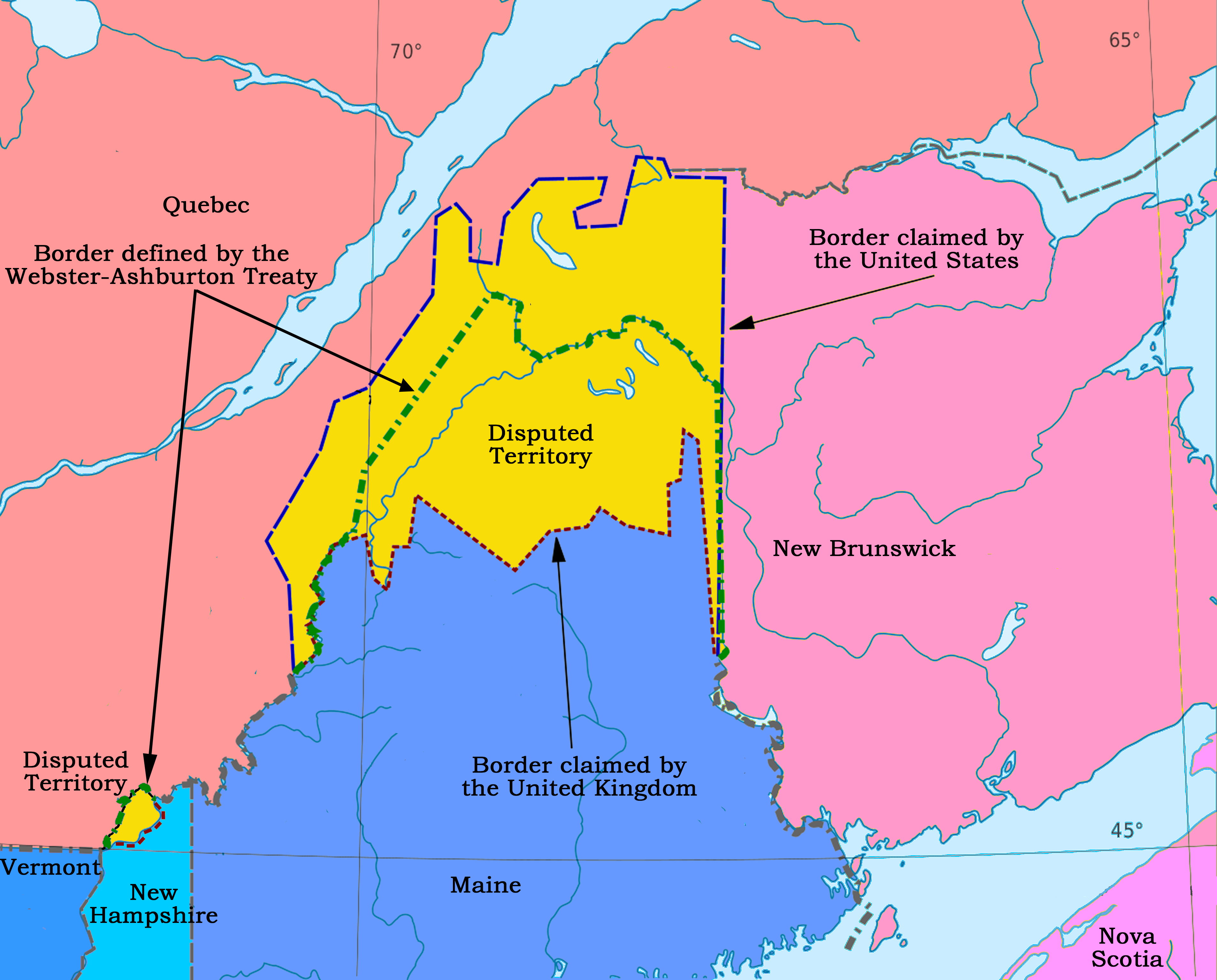The Aroostook War was a bloodless confrontation between the United States and Great Britain from 1838 to 1839, primarily over the boundary between the British territory of New Brunswick and the U.S. state of Maine. This conflict was more of a territorial standoff fueled by local lumberjacks’ disputes and national pride.

Disputed territory between Maine and New Brunswick – Source: Wikipedia
Tensions escalated when the British began surveying the disputed territory for timber resources, leading to clashes with American lumberjacks. Both sides organized local militias, leading to a buildup of forces in the Aroostook region, which sparked fears of a full-blown war.

Historical map showing the disputed territory – Source: Boston Rare Maps
The conflict was eventually resolved diplomatically. In 1842, the Webster-Ashburton Treaty was signed, which established a clear boundary and de-escalated tensions. Despite the lack of active combat, the Aroostook War highlighted issues related to U.S.-British relations during the era.

Military positions during the conflict – Source: Maine Memory
The Aroostook War is often regarded as a precursor to more significant diplomatic negotiations and illustrates how territorial disputes can lead to potential armed conflict, even when actual fighting is avoided.
Categories: American History, Diplomatic Relations, Military History, Territorial Conflicts, War History
Tags: 19th Century Conflicts, Aroostook War, Maine History, Territorial Disputes, US-British Relations
Religion: Not applicable
Country of Origin: United Kingdom, United States
Topic: Military History
Ethnicity: Not Applicable

